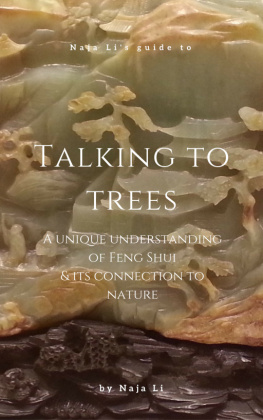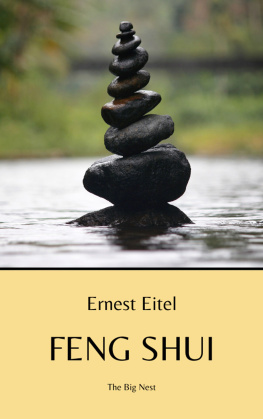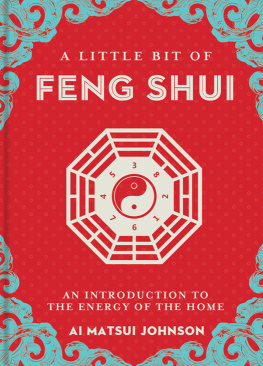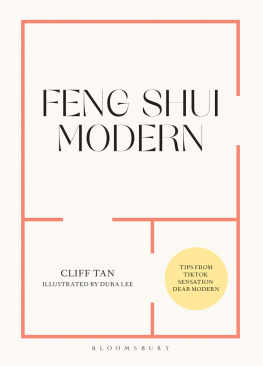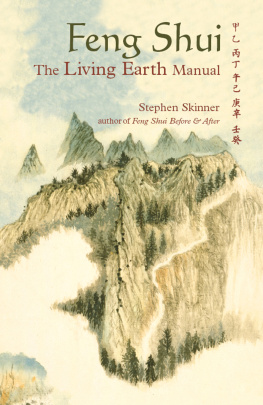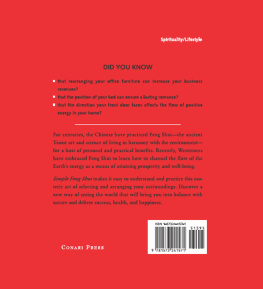Naja Lis Guide to Talking toTrees
A unique understanding of Feng Shui and itsconnection to nature, including a special part played by trees
Copyright 2017 Naja Li
Published by Naja Li at Smashwords. All rightsreserved.
www.houseofli.com.au
ISBN:978-0-6480120-0-9
This book is dedicated to my parents, who taught meall I needed to know about love.
Contents
Introduction
Naja Li uses the gift of clairaudience to bring youher Guide to Talking to Trees - a unique understanding of Feng Shuiand its connection to nature, including a special part played bytrees. This understanding of Feng Shui comes from a time whenapproaches to health and sickness, living and dying were one. Allthe teachings in this guide relate to one key statement:
'Feng Shui is for death benefit, not life benefit.The blessings of life depend on rebirth and not on materialpossession. The truth of life is death, for beyond deaths grasplies a passage to light. Being as one with light is mans onlytask'
Talking to Trees is composed almost entirely of FengShui teachings reproduced as heard. The first part of the bookcontains teachings from the Li tradition and are about 3,200 yearsold. The second part of the book is composed of teachings from anolder tradition from which Li Feng Shui emerged. Careful readersmay detect a subtle shift in focus between the newer and oldertraditions. In essence, the older tradition is more concerned withthe ontological nexus of Feng Shui and spiritual healing, whereasthe focus of Li is the role of the ancestors as a means for this tocome about. In this way, Li can be seen as a direct and practicalapplication of an older tradition.
It is my understanding that the teachings of Li, andgeneral knowledge of Feng Shui as a philosophical platform forliving and dying, have not otherwise survived. This book isintended only as a short introduction to a much bigger inquiry, thedetails of which I hope to bring you once I refine myunderstanding. Interested readers may access further material,including explanatory articles, at www.houseofli.com.au.
This book has five chapters. The first of these is mycommission from the first Master of the House of Li. This isrelatively easy to follow and contains a clear presentation of theLi tradition of Feng Shui. The second chapter is specific to the Litradition and contains practical information for using Li ineveryday life. In brief, Li is a tradition that places centralimportance on the path of the ancestors. This path, also known asLi, is the path of infinite love. According to the tradition, thisis the means by which we are guided to fulfil ourspiritual destiny.
The third chapter is an explanation of spiritualhealing and describes the relationship between birth, death andKarma. It also introduces the reader to the concept of TrueHealing, the kind of healing that can be achieved on earth. Thematerial of the fourth chapter is dense and poetic, and eloquentlydescribes a relationship between spiritual healing and nature.
The fifth and final chapter is a poetic witness tothe relationship between True Healing and nature. As I hear thesong of the trees in much the same way as I hear my Feng ShuiMasters, these twelve poems bear witness to the possibilities thatlie within everyday encounters with nature.
Finally, please note that the words man, mankind andmen are used interchangeably. I am aware of a feministichermeneutic that requires neutral language, and no offence isintended through the use of these arguably androcentric terms.Their use here is simply because these are the words I hear.Readers are cordially asked to acknowledge that the single purposeof this book is to provide a testament to an ancient understandingand, for this reason, editorial changes have not been permitted.This editorial policy is also the reason why some sentences containboth you and our. I apologise for any confusion and invitereaders instead to consider themselves as existing continuouslywith the tradition behind the text.
Wishing you Health and Happiness,
Naja.
Chapter 1: Naja Lis commission
You must speak so they will hear of the beauty ofnature alive in the eyes of man. For the eyes that see the wind andfeel the water are the eyes that know the soul of the stars. We,mankind, are as one with the stars for we, as they, are children oflight. Our time on earth is dark, the light is very pale, we cannoteven feel the beauty all around us. But as we move through deathand beyond we become as light, as like the stars. These stars theyguide us on earth and they are a guide to our fortune. But thesestars do not direct our fortune and for this reason you may not saythat you can tell the future by using the stars. This is sorceryand for this act you will be punished.
Your life is dark, your body is corrupt, for yoursenses tie you to the realm of suffering. Feel the wind on yourcheek and know that the beauty of nature is as one with the soul ofman. The hidden art that we protect is useless in the face of allthis misery. Few hear, few see that nature is the soul of man. Thatto return as light is the ultimate rest. That without rest you willwander in endless valleys beyond vast seas of death.
You must speak of the beauty of nature, how it may bedrawn into the lives of man. Know that there is one path and thisis the path of Li. This path was blessed before your birth; begforgiveness and ask that your ancestors set you free. For theycontrol the path, they alone permit you to walk in light. Pray thatyour ancestors watch over you, that your actions may be pleasing,for without their blessing you are dust. See these men and womenwho have fallen, their souls dark, their minds corrupt. They notknow, not care of their redemption, that the final rest is one withlight. These fallen souls must wander, seldom reborn, neverblessed. Their blackness is not seen by man.
The wind, the water, the secret that we hold is thatman is free who breathes as one with nature. Nature s breath isthe soul of man, it allows man to become one with light. To becomeone with light, one must hold in ones heart the knowledge ofnatures beauty. Within this beauty there is knowledge that noearthly knowledge can exceed. Man must let this beauty be his onlypleasure and forsake all other goals.
For all around is beauty, see it bathed in light.Hear the darkness fall and the curtain of night drop heavy. Tobehold this knowledge and walk in light is mans true path, forthis path will guide you to eternal rest. The light that is ourfinal rest is the light that reveals this beauty. Follow itendlessly and you will become one. Changing seasons are not theburden of time, they are the consequence of light as it movesthrough our lives. The burden of these changes is the burden we allcarry to lift our fellow man to a place beyond. Light is our path,it is our very nature, it is our destination and it will be a balmto soothe those of lesser fortune.
For those who cannot see or hear or feel, those sickor blind or destitute it is for them we speak of the path, sothey too may be one. For those who are wealthy and ride around onhorses, they have no need for eternal rest. Their mind is on fineryand achieving higher station, they care not for those who cannotstand. The voice of Li is strong and it carries through the ages:nature is one, the path is one, let Li be your guide.
Feng Shui knowledge is for the common man, it is forall - not just the few who can afford it. For all must die and bereborn, this is mans destiny. Only few do not return, higher soulswhose journey ends. They earn their rest through many lifetimes ofachieving peace and happiness. This is not the goal of Feng Shuifor Feng Shui teaches peace in the heart every day for every man.It is the knowledge of the beauty and power of nature and the placeit has in our hearts.
All must know that Feng Shui is for them to holdwithin. This beauty of nature is a gift to man, it is the greattreasure of existence. Hold it close and it will reveal all mannerof knowledge, for in its many forms there lies the secret tolife.
Next page
